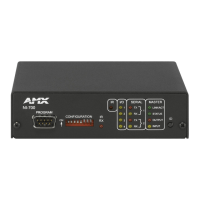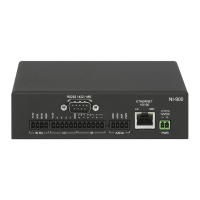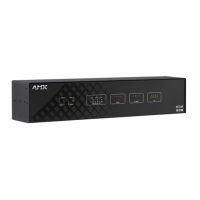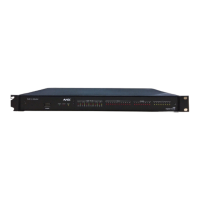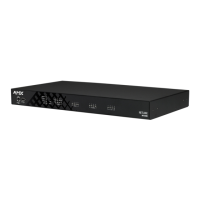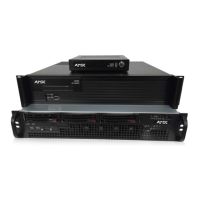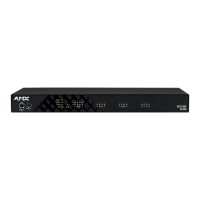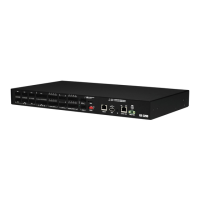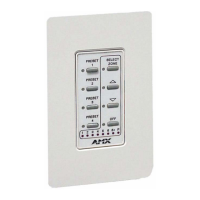WebConsole - System Options
54
NetLinx Integrated Controllers (Firmware v4)- WebConsole & Programming Guide
Displaying SSL Server Certificate Information
Click the Create SSL Certificate link in the Server Options page to open the Create SSL Certificate window.
By default, the Display Certificate Action is selected and the fields in this window are populated with information from the
certificate installed on the Master.
If the Master does not have a previously installed certificate, these fields are blank.
Creating a Request for an SSL Certif icate
1. Click the Create SSL Certificate link in the Server Options page to open the Create SSL Certif icate window.
2. Fill out the fields, according to the descriptions in the SSL Certificate Entries section on page 53.
3. Click the down arrow next to the Action field, and choose Create Request from the drop-down list.
4. Click the Create SSL Certificate button to accept the information entered into the above fields and generate a certificate file.
Click Close to exit without making changes to the Master. This refreshes the Server Certificate page, and if the certificate
request was successful, displays a "Certified request generated" message.
Self-Generating an SSL Certif icate
1. Click the Create SSL Certificate link in the Server Options page to open the Create SSL Certificate window.
2. Fill out the fields, according to the descriptions in the SSL Certificate Entries section on page 53.
3. Click the down arrow next to Action and choose Self Generate Certificate.
When this request is submitted, the certificate is generated and installed into the Master in one step.
4. Click Create SSL Certif icate to save the new encrypted certificate information to the Master. Click Close to exit without making
changes to the Master.
Regenerating an SSL Server Certif icate Request
This action allows you to is used to modify or recreate a certificate already on the Master. For example, if the company has moved
from Dallas to Houston, all of the information is reentered exactly except for the City.
1. Click the Create SSL Certif icate link in the Server Options page to open the Create SSL Certificate window.
2. Modify the certificate information as needed (see the SSL Certificate Entries section on page 53).
3. Click the down arrow next to Action and choose Regenerate Certificate.
4. Click Create SSL Certif icate to save the newly modified certificate information to the Master. Click Close to exit without
making changes to the Master.
NOTE: Only use the Regenerate Certif icate option when you have self-generated your own certificate. Do not regenerate an
external CA-generated certificate.
Exporting an SSL Certif icate Request
1. First follow the procedures outlined in the Creating a Request for an SSL Certif icate section on page 54 to create a session-
specific Master certificate.
2. Click the Export SSL Certif icate link to display the certificate text file in the Export SSL Certificate window (FIG. 57).
3. Place your cursor within the certificate text field.
The certificate text begins with the line that reads "-----BEGIN CERTIFICATE REQUEST-----" (scroll down to view the
certificate text.)
4. Select all (Ctrl + A) of the certificate text.
You must copy all of the text within this field, including the -----BEGIN CERTIFICATE REQUEST----- and the -----END
CERTIFICATE REQUEST----- portions.
Without this text included in the CA submission, you will not receive a CA-approved certificate.
SSL Certificate Entries (Cont.)
Entry Description
State/Province: Name of the state or province where the certificate is used (alpha-numeric string, 1 - 50 characters in length).
Note: The state/province name must be fully spelled out.
Country Name: Provides a drop-down selection with a listing of currently selectable countries.
FIG. 57 Export SSL Certificate window
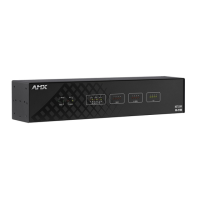
